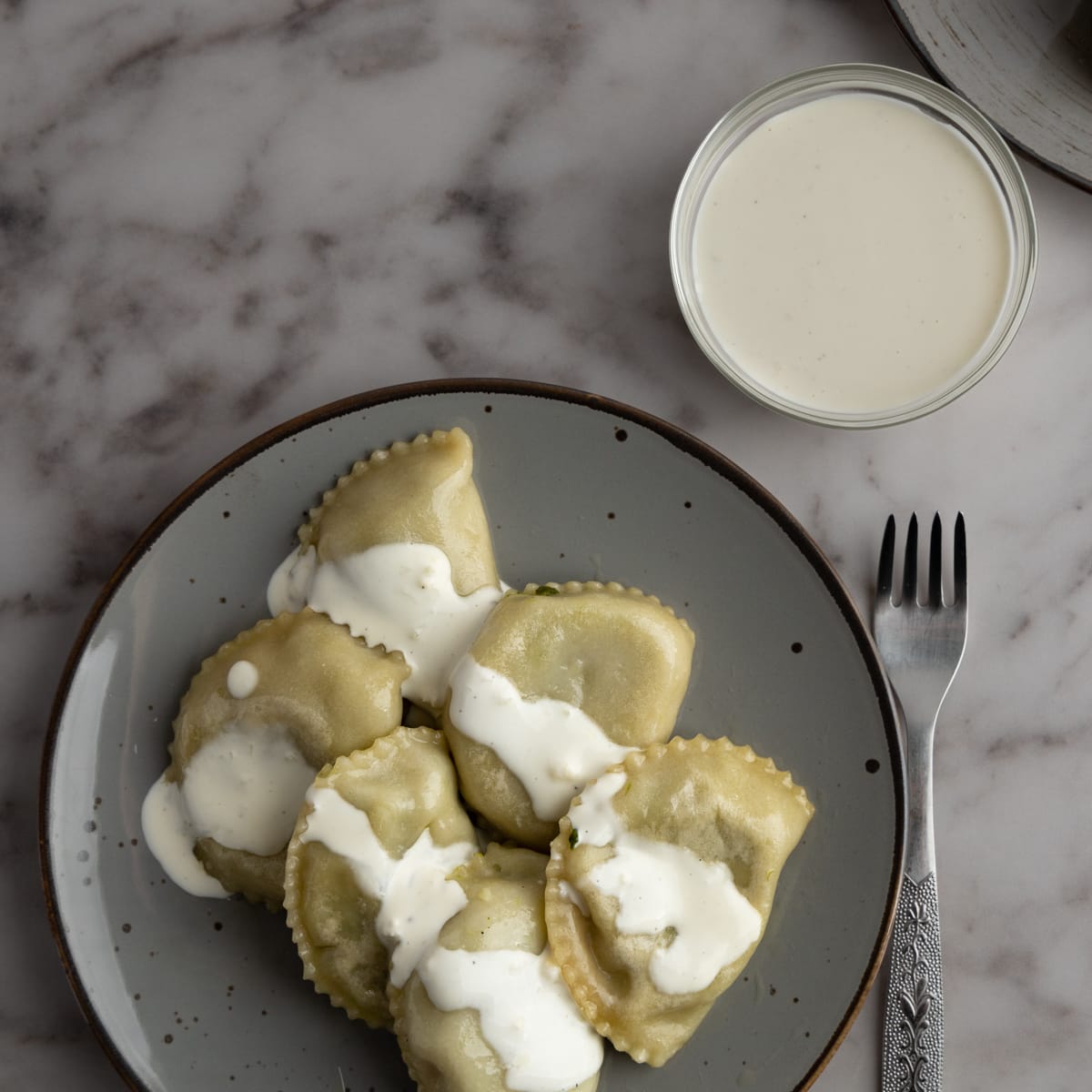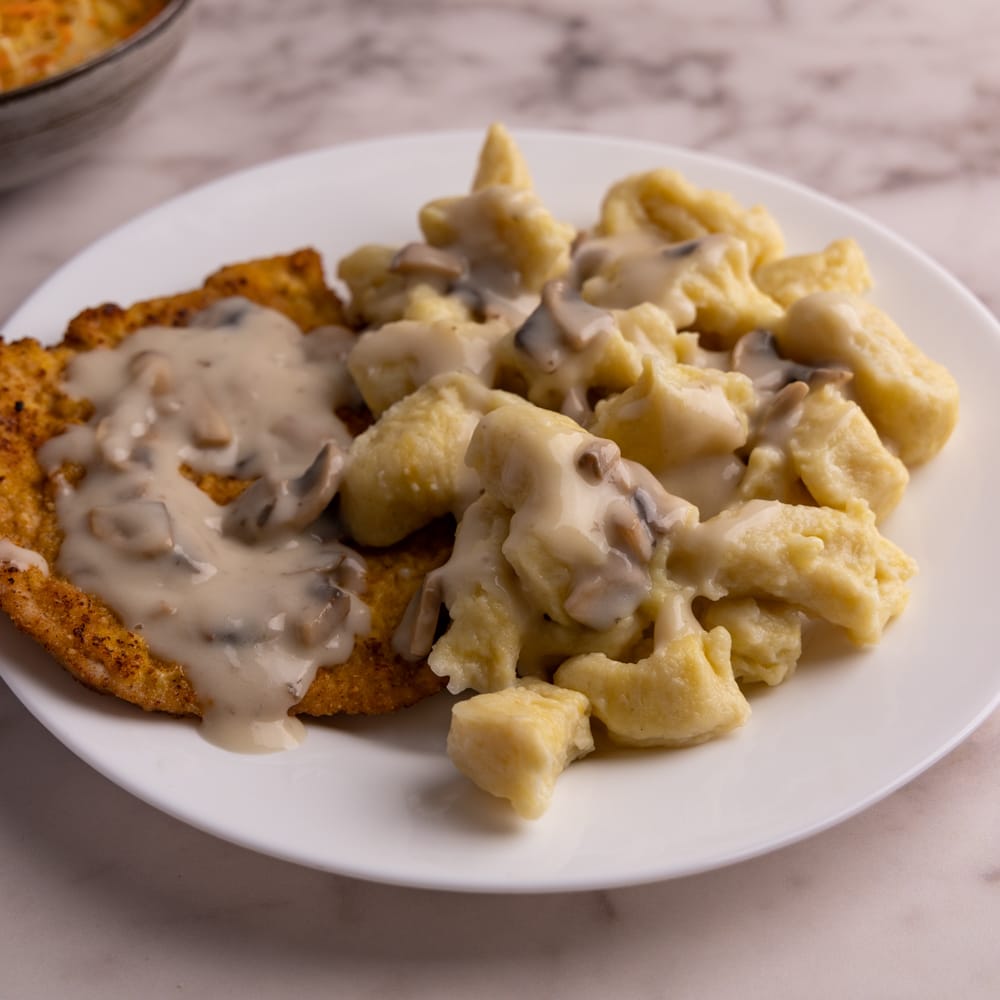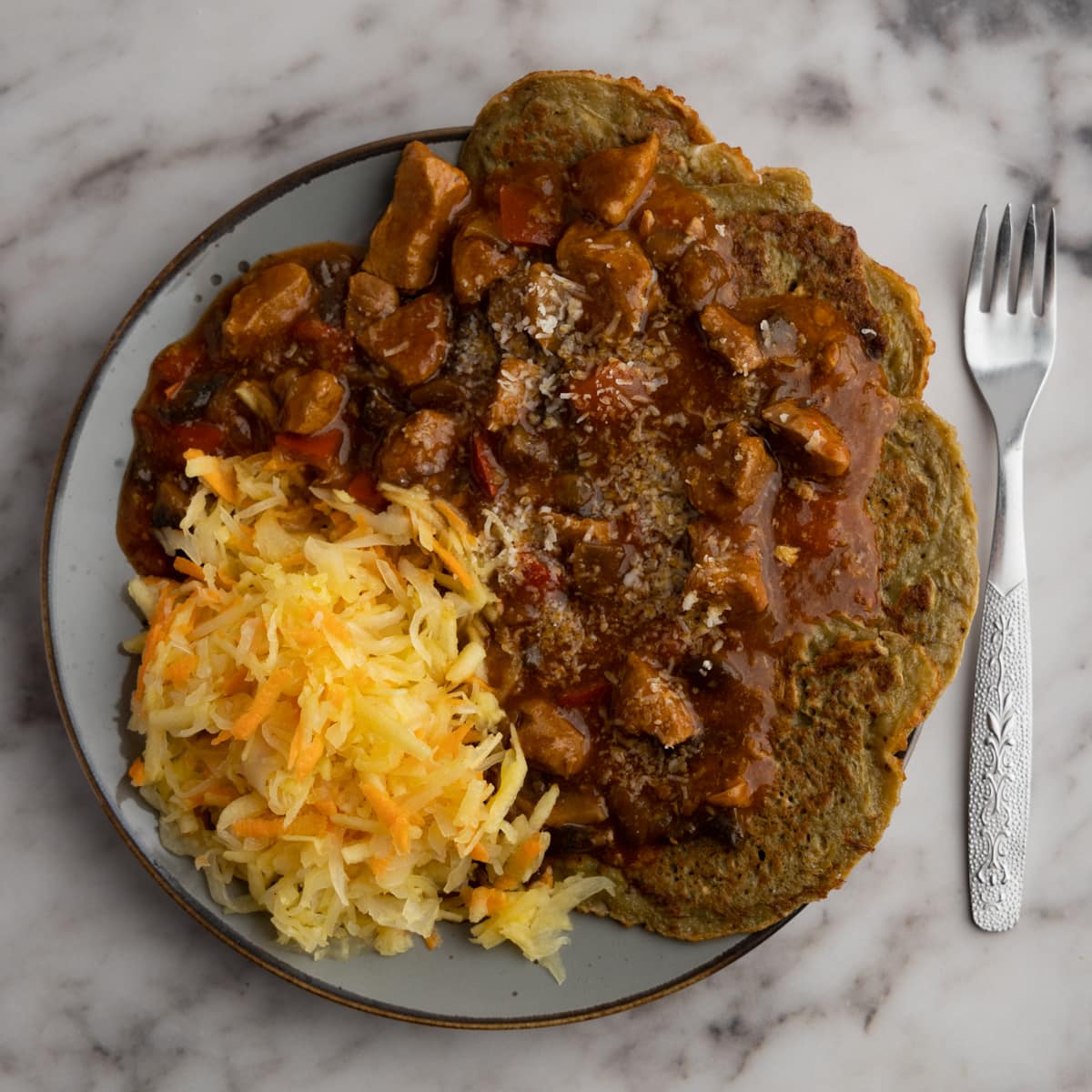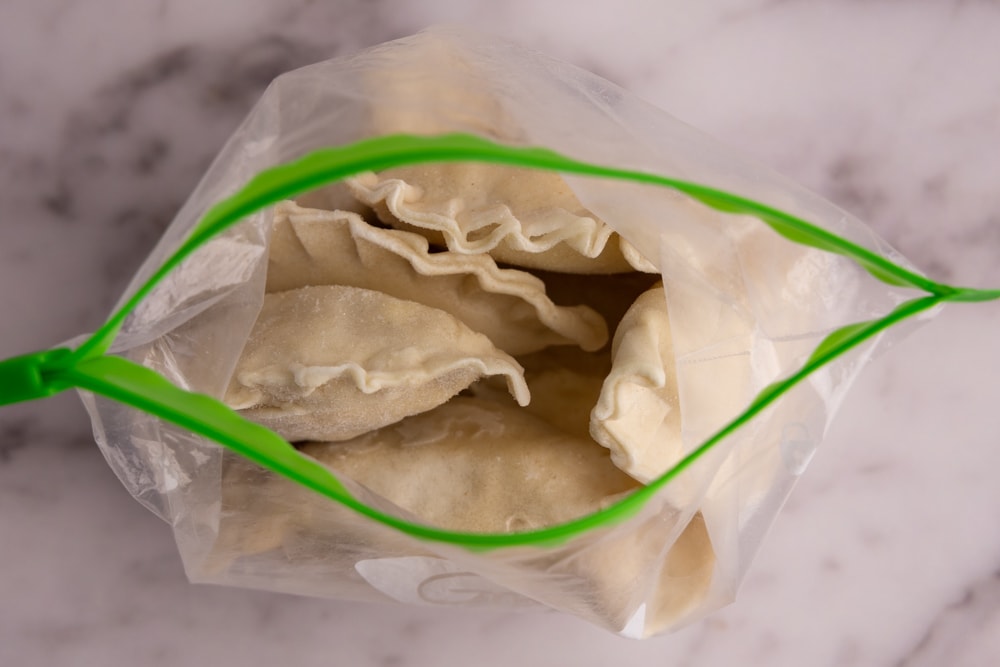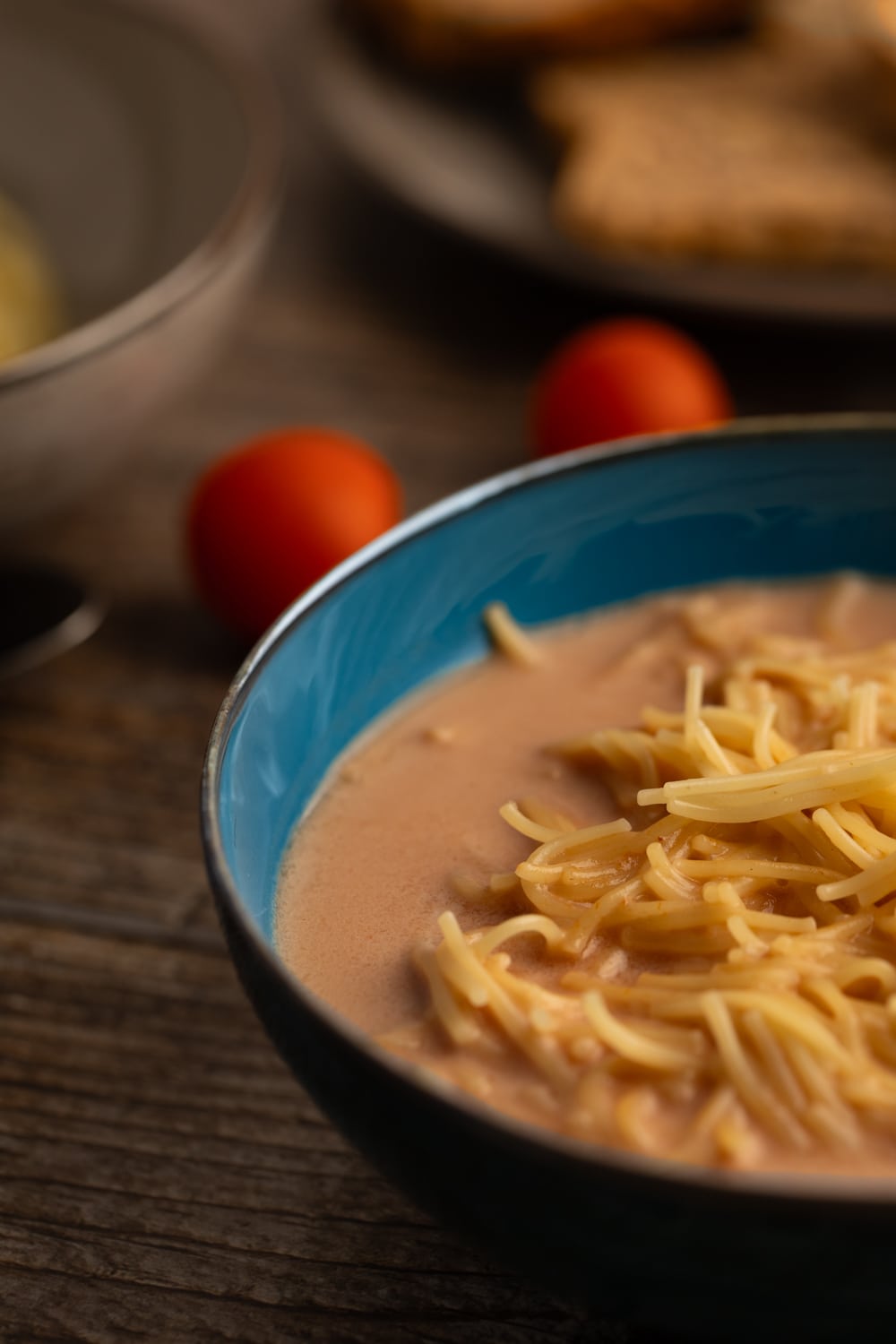Polish Lazy Pierogi Dumplings Recipe (Leniwe)
Polish lazy pierogi are a simple and delicious main that you can have ready in about half an hour. If you’re feeling like eating pierogi but can’t spend the next two hours making them, this recipe is for you.
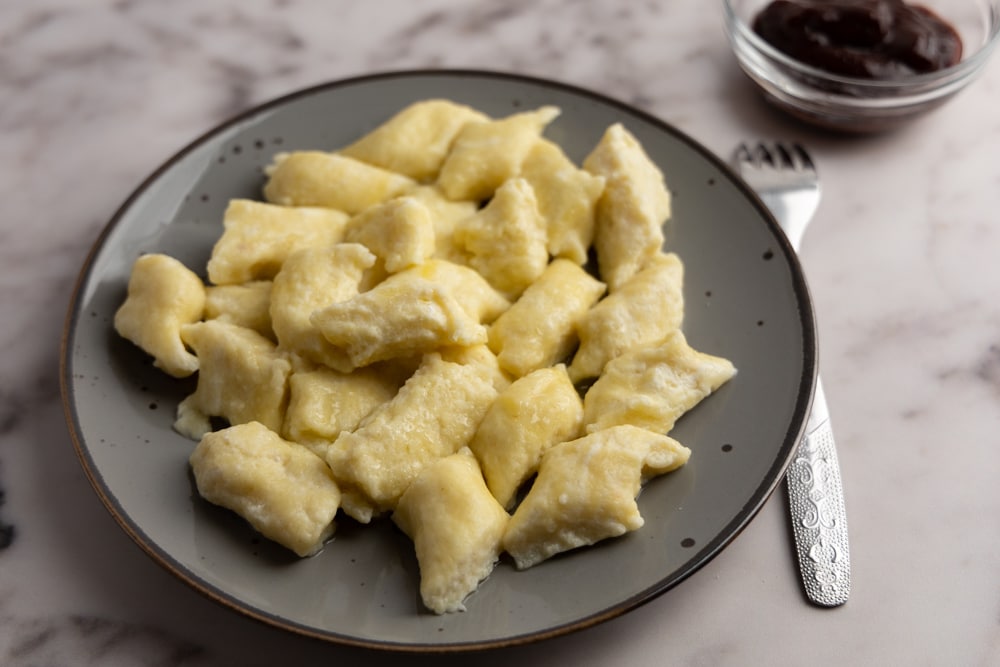
These are called “lazy” because they use most of the ingredients needed to make cheese pierogi, but the whole process is simplified, so there’s no rolling out the dough, cutting out the pockets and filling each dumpling, and pinching the ends together.
As a result, these take half an hour or so to make, instead of over an hour (up to several hours, depending on the filling) needed to make regular pierogi.
Now, polish lazy pierogi are vastly different from lazy pierogi known in the US. The US version is a pasta casserole, while the polish one is, in essence, a cheese dumplings recipe.
You can also make these using boiled potatoes instead of ricotta. I cover that in the polish potato dumplings recipe post.
If you’re making polish lazy pierogi for the first time, read the ingredients notes, step-by-step instructions, and tips, and pick a topping you like. If you’re a veteran, feel free to jump to the recipe card.
Warn to make “real” pierogi? Check out our guide to homemade pierogi to learn everything you need to know about the process.
Polish Lazy Pierogi Ingredients
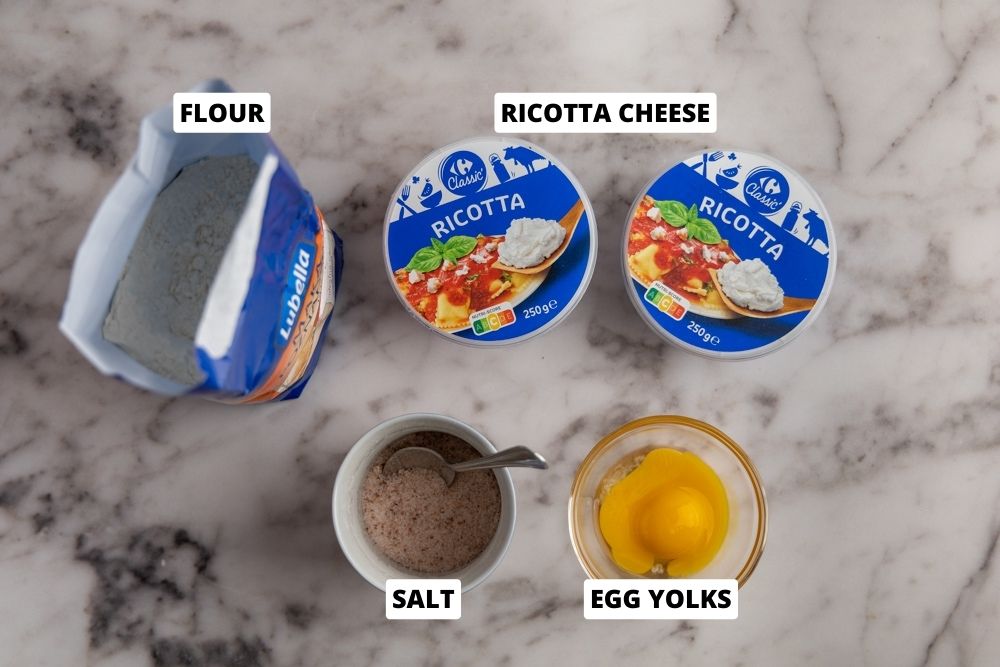
Ingredients Notes and Substitutes
- Fresh ricotta. Authentic polish lazy pierogi use quark, sometimes called farmer’s cheese, but it’s not a product that’s widely available in many other countries. On the other hand, ricotta is much more popular worldwide and makes the recipe even easier to make. If you have quark or farmer’s cheese on hand, read the section on adjustments.
- Flour. All-purpose flour works great for these. Using whole wheat flour should also work okay, but I’m yet to test it, so I cannot recommend it as a substitute.
- Eggs. I like using yolks only, but many polish recipes use whole eggs, and they work just fine. If you can’t think of any uses for the whites, use whole eggs; I save my whites and add them to scrambled eggs.
- Salt. Use fine-grain sea salt.
Adjustments for Quark (or Farmer’s Cheese)
If you’re using farmer’s cheese instead of ricotta, there are a few things you need to do differently. Here they are:
- Use whole eggs instead of egg yolks only. Those whites help bind everything together.
- Mash the farmer’s cheese thoroughly using a fork before adding the eggs and salt. Many polish recipes call for a potato ricer at this point, but fortunately, a fork does a good-enough job at the task. Besides, this recipe is called “lazy pierogi” for a reason.
- Besides eggs and salt, add two tablespoons (per pound of quark) of softened or melted (but not hot) butter to the dough. It helps keep everything together.
- Before you roll out the dough with your hands, knead each portion using floured hands for a minute or so to ensure everything is well-mixed.
- Limit cooking time after the pierogi rise to the surface to 60 to 90 seconds tops. If you leave them longer, they might break apart. Lazy pierogi with ricotta typically keep together for at least 3 to 4 minutes, so there’s more room for error.
Again, ricotta is much more forgiving in this recipe, so unless you’re going for that authentic taste, it’s a better choice if you’re cooking the dumplings for the first time.
Polish Lazy Pierogi Step-By-Step Instructions
- Drain the ricotta. If there’s some liquid in your ricotta, drain it.
- Combine the ricotta, salt, and egg yolks in a medium bowl. Stir using a fork or a wooden spoon until combined.
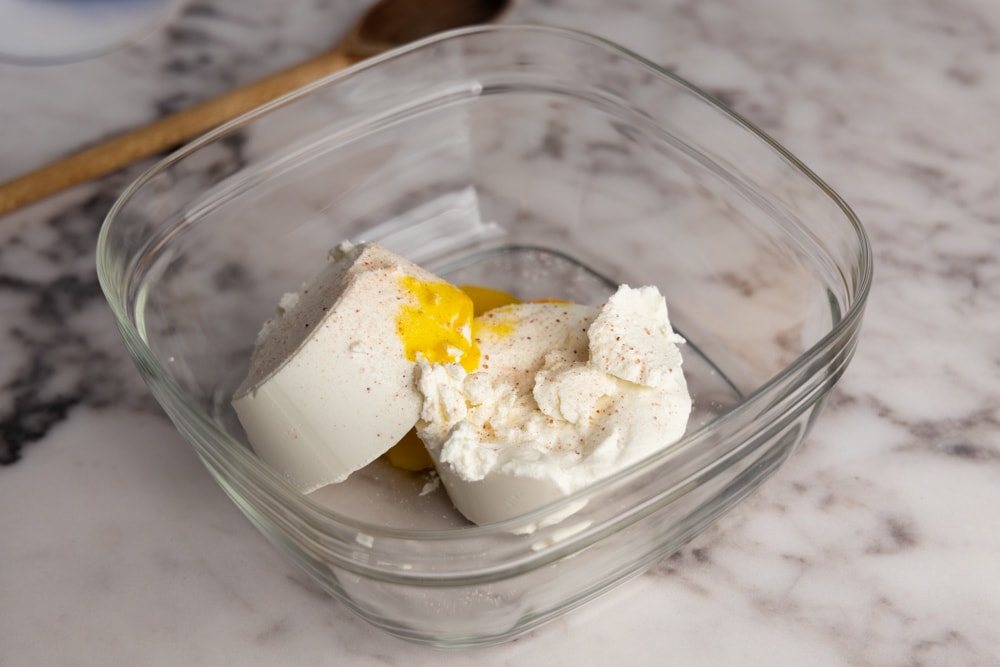 Before
Before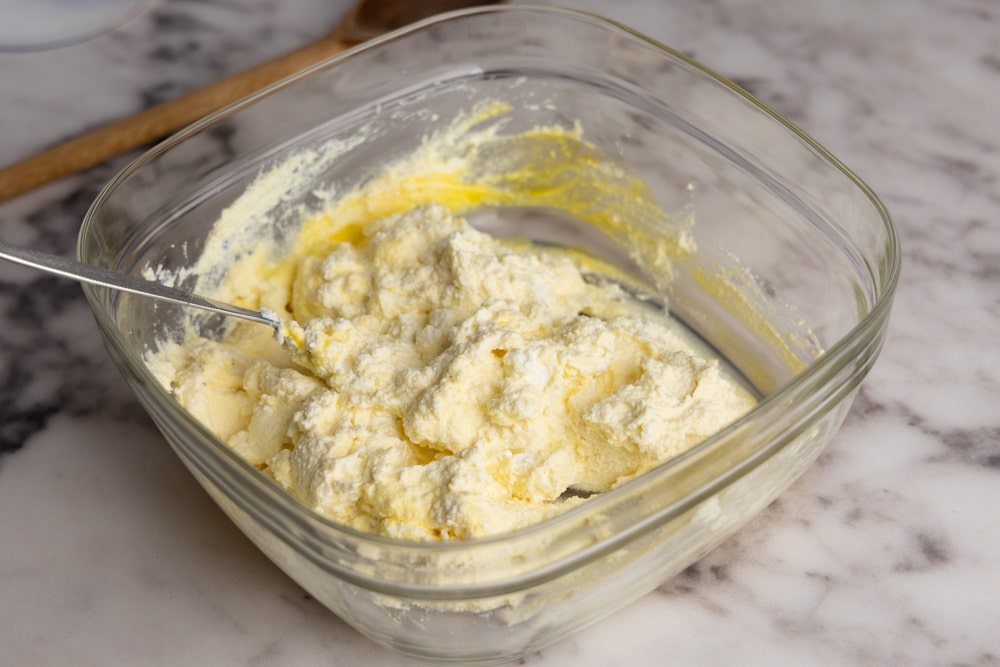 After
After
- Add all the flour and stir to combine. The dough is supposed to be sticky, and it definitely won’t clear the bowl. If it’s super sticky, stir in another 1 to 2 tablespoons of flour, but not more.
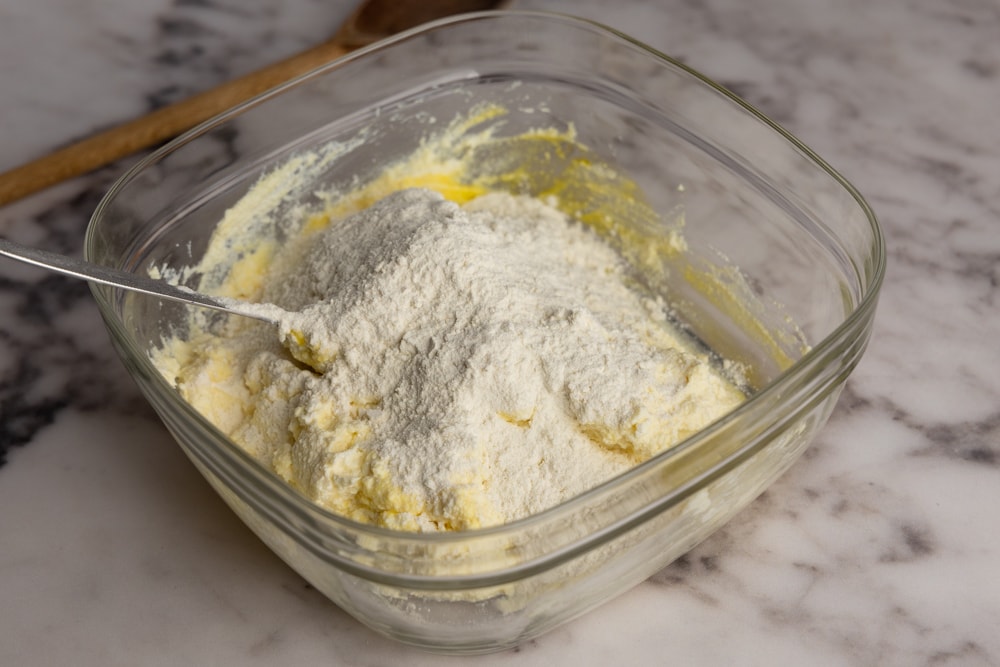
Added flour 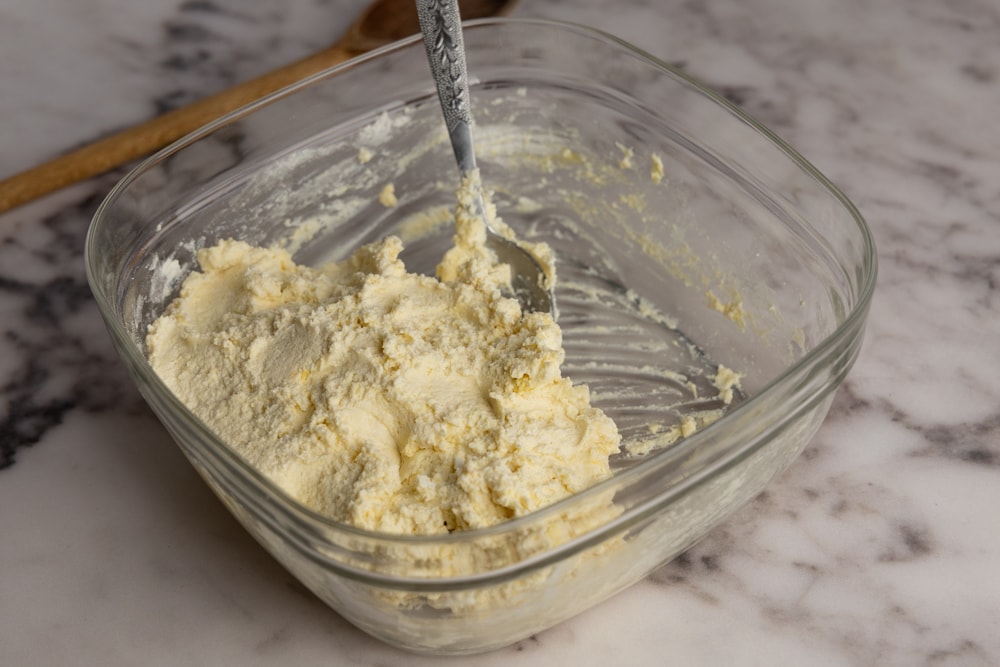
Dough mixed
- Start boiling salted water in a large, wide-bottomed pot or saucepan. Add about one teaspoon of salt per 1 quart of water.
- Spoon about ¼ of the dough onto a well-floured work surface, then roll it into a 1 to 1 1/2-inch-thick rope using floured hands. Add more flour to the work surface if the dough starts sticking. Then cut the rope into 1 to 2-inch pieces using a lightly floured knife and transfer them onto a well-floured surface. Cover the cut pierogi and repeat with the remaining dough. To make the pierogi look a bit fancier, cut the rope diagonally.

Dough on work surface 
Rolling using hands 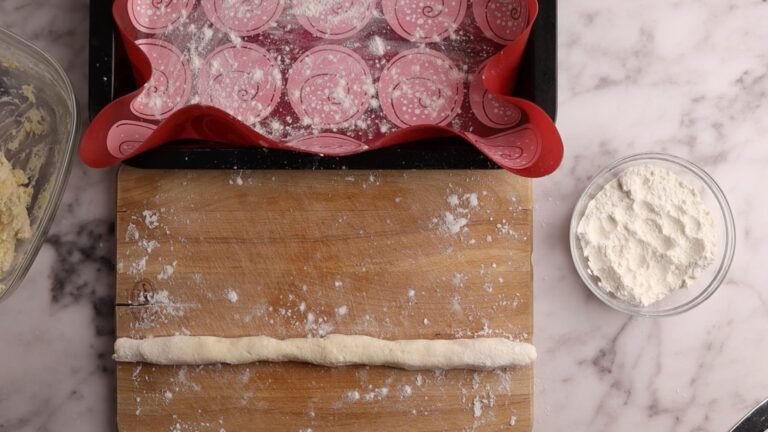
Ready for cutting 
Pierogi before boiling
- Once the water starts boiling, lower it to a gentle simmer. Carefully transfer ¼ to ½ of the cut dumplings (a bit more than can a single layer is okay) into the simmering water using lightly floured hands, and stir them gently using a spoon so they don’t stick to the bottom.
- Once all pierogi float to the surface, let them cook for another 1 to 2 minutes so they cook through.
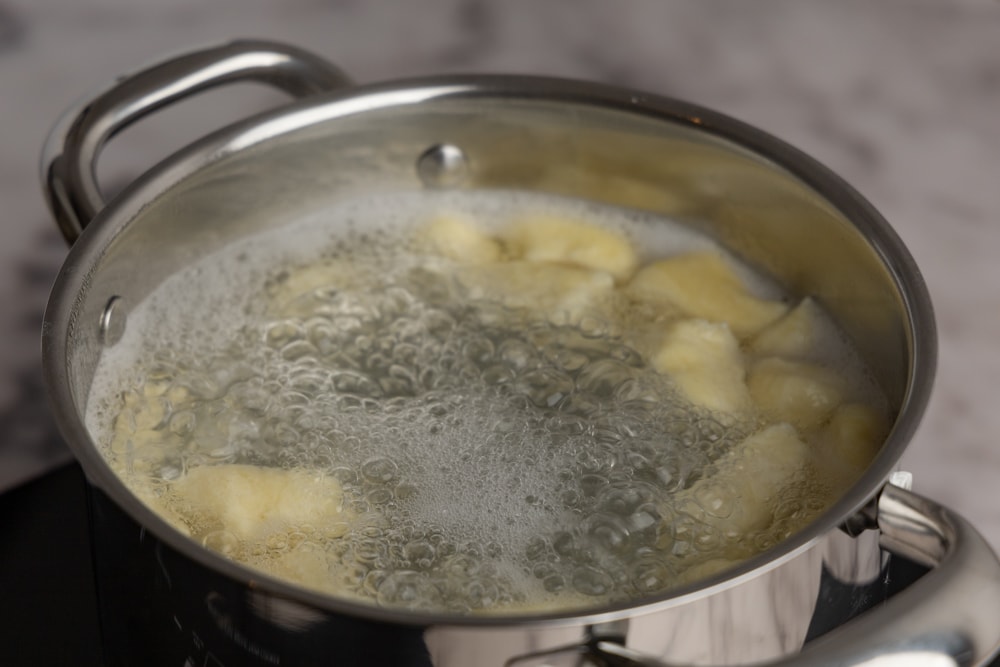
- Remove the pierogi using a slotted spoon and serve.
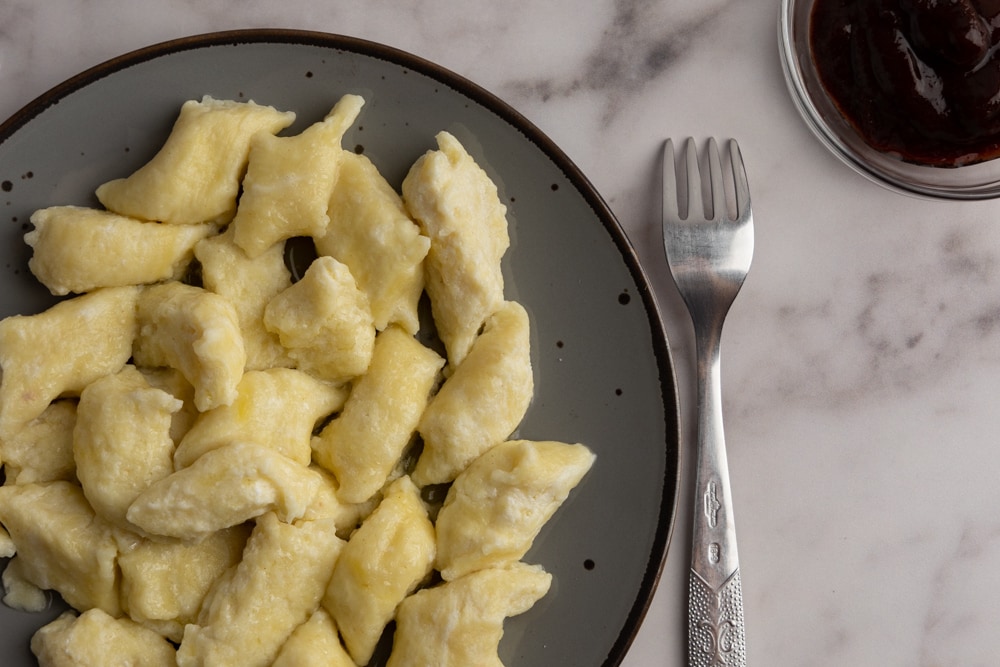
Recipe Tips
- Limit the amount of flour you use. Some recipes suggest using up to two cups of flour for the same amount of cheese, but the result is firmer and more mealy pierogi. We want ours to be light and fluffy, hence the lower amount of flour.
- Flour your work surface and hands often. The dough is sticky, and you’ll want to have some flour handy and use it as often as necessary.
- Start boiling the water early. Start the pot on the stove before rolling out the dough or even before you start to prepare it. Boiling a big pot takes quite a while, so it’s best to start early. You don’t want to wait for the water to boil when you have all your pierogi dough rolled out and cut.
- Decide on a topping in advance and plan accordingly. Unless you plan to sprinkle sugar or pour some premade sauce over your pierogi, you need to prep the topping at some point. If it’s just a couple of ingredients you need to combine, you can easily do it while waiting for the dumplings to cook.
- Once you bring the water with the pierogi back to a boil, all you need is a light simmer. If it boils violently, it might cause the pierogi to break into smaller chunks or break apart completely.
Variations
Serve Them Browned
Instead of serving these straight from the pot, you brown them in a skillet first.
Melt 1 to 2 tablespoons of butter in a non-stick skillet and once everything is nice and hot, move the drained pierogi straight to the skillet and cook until lightly browned on both sides. Serve immediately.
Be careful, as the water from the pierogi will cause oil spatters.
You can also add a couple of teaspoons of bread crumbs for added texture. Here’s what that might look like:
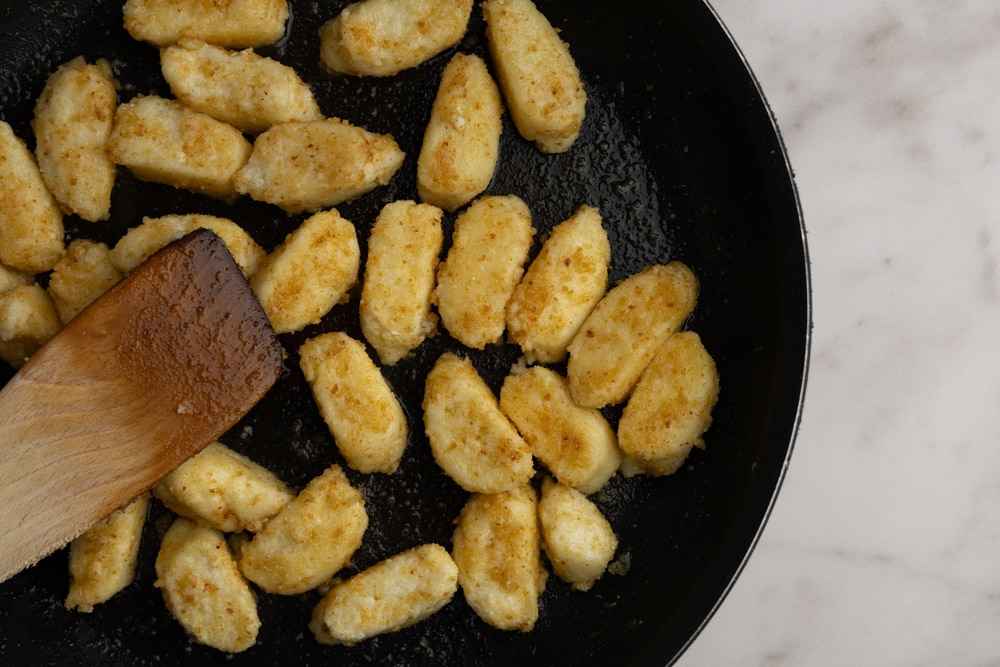
Toppings
Here are some toppings to get you started:
- Melted butter and sugar. The easiest sweet topping possible, except for just sprinkling the pierogi with sugar. Melt 1 to 2 tablespoons of butter and pour over the pierogi, then dust with powdered or regular sugar.
- Sour cream and brown sugar. Sour cream works great with sweet dishes. Here, we need to add in some sugar, as our lazy pierogi don’t contain any. Combine half a cup of sour cream with 1 tablespoon of brown sugar and maybe a drizzle of vanilla extract if you have one on hand. Add more sugar if it’s not sweet enough, and spoon generously over your pierogi.
The options above are just simple examples if you have absolutely no idea what to use as a topping. Or if you don’t have time to be fancy.
But if you have a couple of spare minutes, you can surely come up with other options. Consider using some of the popular pancake toppings like maple syrup, honey, jam, or even melting some chocolate. Again, the possibilities are endless.
You can also try using a savory topping like pesto or sauteed onions, but I haven’t tested these, so I cannot recommend anything in particular. Polish lazy pierogi are typically served sweet.
Storage & Reheating
- Storage. Lightly coat any leftovers with melted butter or neutral oil so the pierogi don’t stick together. If they’re still warm, drop a couple of slivers of butter here and there and coat the dumplings once it melts. Don’t cram the container so they don’t stick. Refrigerate in a tightly sealed container for up to 4 days. Alternatively, you can freeze lazy pierogi the same way you freeze pierogi.
- Reheat. Melt one to two tablespoons of butter in a non-stick skillet (or use a neutral oil), spread the pierogi in it, and cook on low to medium heat for 8 to 10 minutes. Give the skillet a shake every now and then so the dumplings don’t stick, and flip the pierogi halfway through so they’re warmed evenly and browned on both sides.
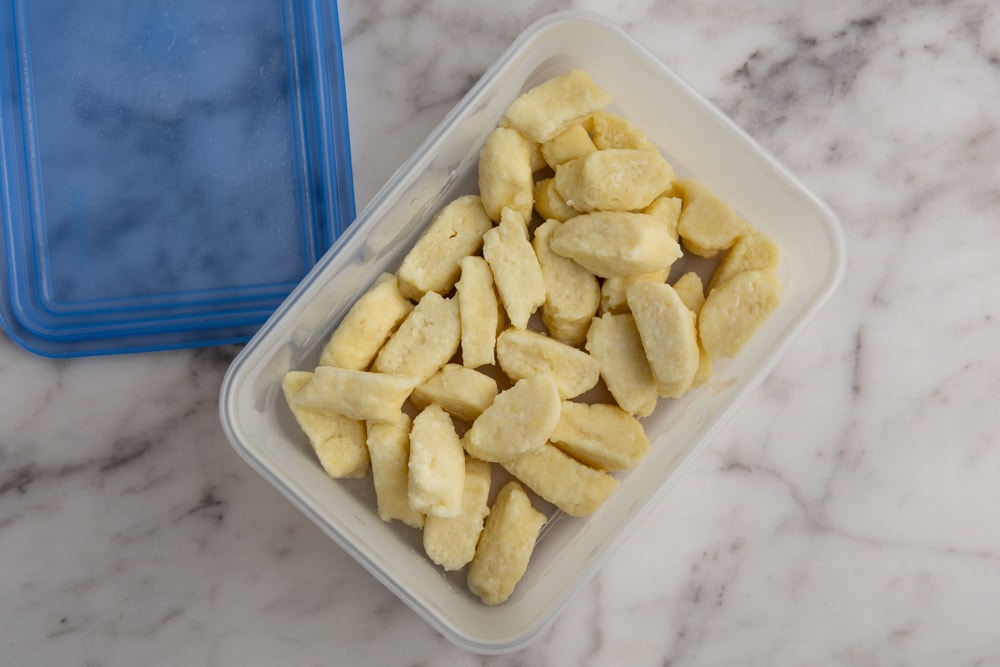
Polish Lazy Pierogi (Leniwe)
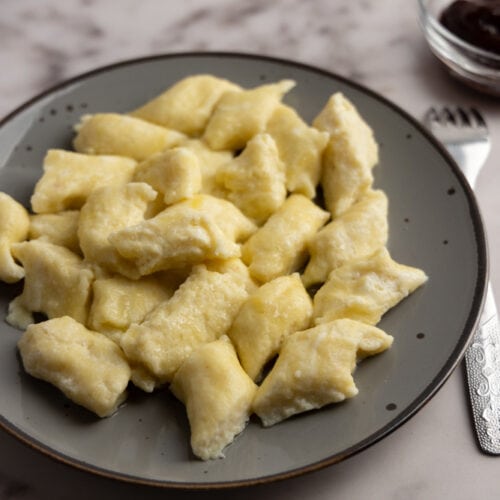
Ingredients
- 1 pound fresh ricotta ( 450 grams)
- ⅞ to 1 cup all purpose flour (108 – 120 grams) plus more for hands and surface
- 2 egg yolks
- ½ tsp sea salt plus more for salting water
Instructions
- Drain the ricotta.
- Combine the ricotta, salt, and egg yolks in a medium bowl. Stir until combined.
- Add flour and stir to combine. The dough is supposed to be sticky. If it's super sticky, stir in another 1 to 2 tablespoons of flour, but not more.
- Start boiling salted water in a large wide-bottomed pot or saucepan. Add one teaspoon of salt per 1 quart of water.
- Spoon about ¼ of the dough onto a well-floured work surface, then roll it into a 1 to 1 1/2-inch-thick rope using floured hands. Add more flour to the work surface if the dough starts sticking. Then cut the rope into 1 to 2-inch pieces using a lightly floured knife, and transfer them onto a well-floured surface. Cover the cut pierogi and repeat with the remaining dough.
- Once the water starts boiling, lower it to a gentle simmer. Carefully transfer ¼ to ½ of the dumplings into the simmering water using lightly floured hands, and stir them gently using a spoon so they don't stick to the bottom. Once all pierogi float to the surface, let them cook for another 1 to 2 minutes, then remove using a slotted spoon.
- Serve immediately.
Video
Notes
- Don’t add more flour to the dough than recommended, or your lazy pierogi will become firm instead of light and fluffy.
- The dough is supposed to be sticky, so have some flour nearby when rolling and cutting the pierogi. Lightly flour your work surface, hands, and the knife you use to cut the rope to pieces. Otherwise, the dough will stick to everything, and it’ll be a mess.
